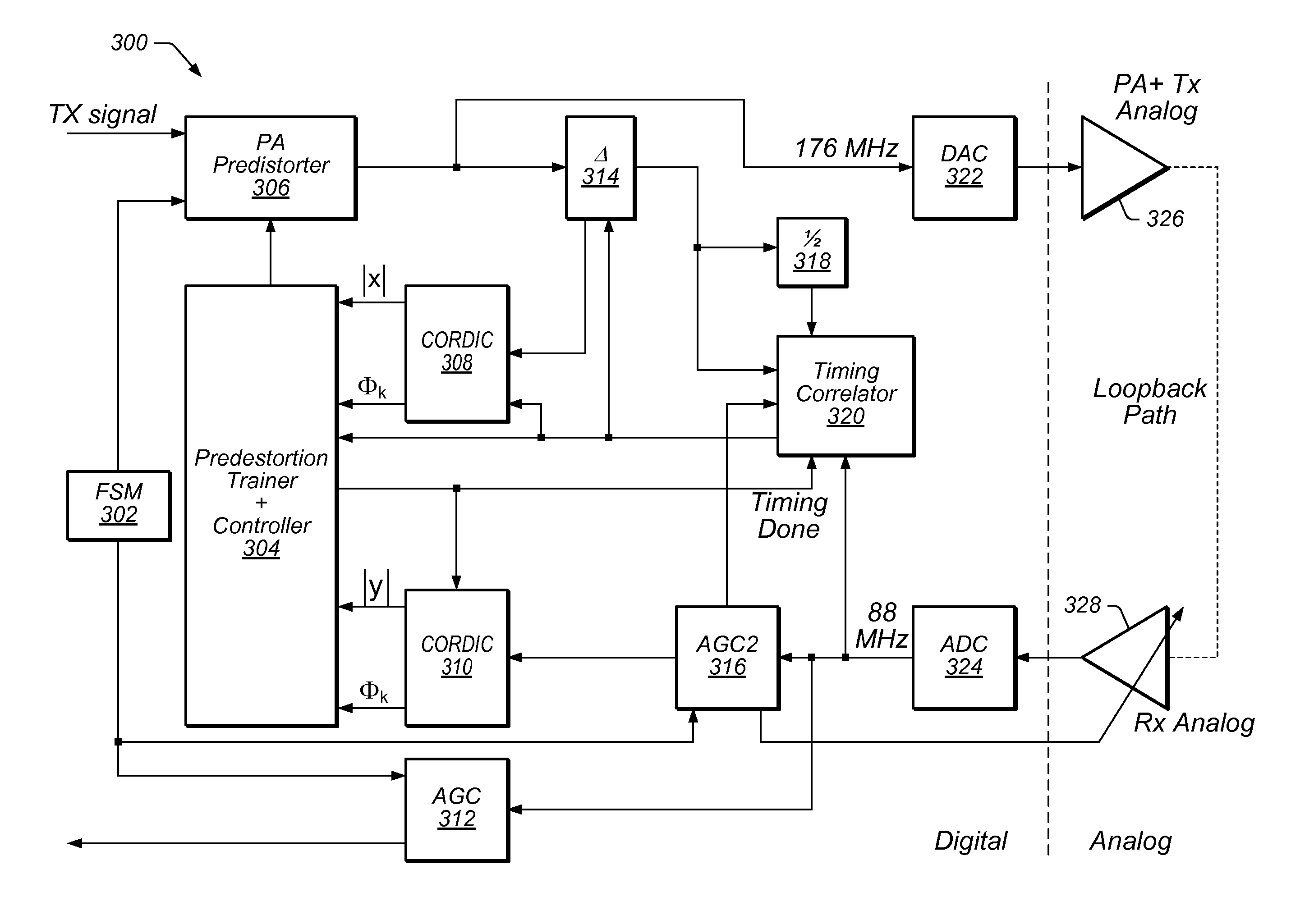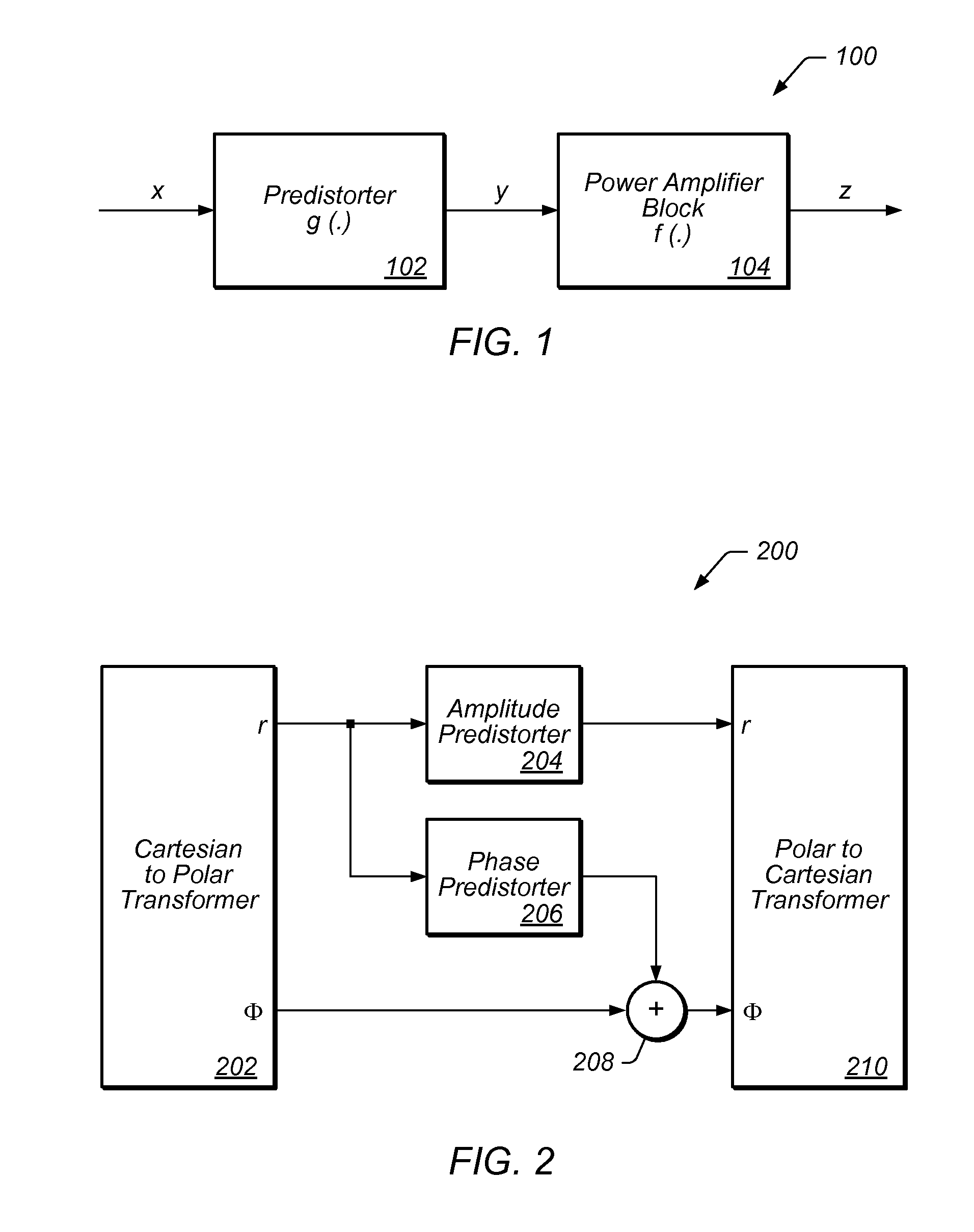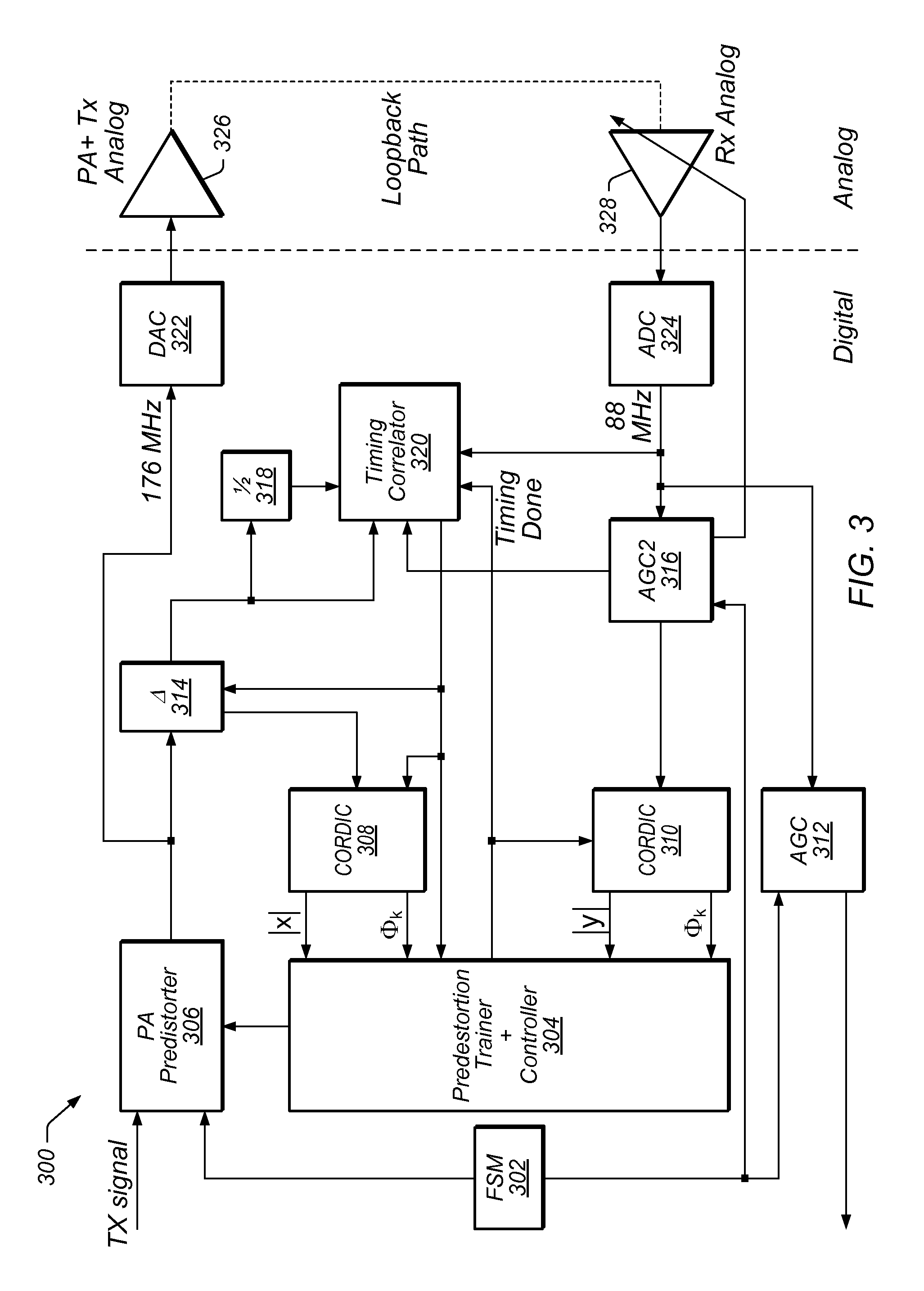Power amplifier linearization using digital predistortion
a technology of power amplifiers and linearization, applied in amplifiers, transmission monitoring, electrical devices, etc., to achieve the effect of avoiding distortion in output signals, maintaining transmit (tx) power, and increasing signal amplitud
- Summary
- Abstract
- Description
- Claims
- Application Information
AI Technical Summary
Benefits of technology
Problems solved by technology
Method used
Image
Examples
Embodiment Construction
[0021]Various embodiments of a transmitter or transceiver that use a power amplifier (PA) for signal transmission may include a predistortion circuit (predistorter) for predistorting the signal to be transmitted prior to the digital-to-analog conversion, in order to compensate for potential non-linearities in the PA output. A non-linearity may manifest itself in an amplifier as an amplitude-dependent gain. That is, the gain of the amplifier may be typically lower for higher amplitude signals than for lower amplitude signals. This is commonly referred to as amplitude distortion. To compensate for amplitude distortion, a predistorter (e.g. in FIG. 1) may be configured to pre-emphasize / amplify higher amplitude signals to ensure that the overall gain—of the predistorter stage and the amplifier stage as a whole—remains the same regardless of the amplitude of the input. In addition to amplitude distortion, the amplifier's output may be also affected by phase distortion. The phase distorti...
PUM
 Login to View More
Login to View More Abstract
Description
Claims
Application Information
 Login to View More
Login to View More - R&D
- Intellectual Property
- Life Sciences
- Materials
- Tech Scout
- Unparalleled Data Quality
- Higher Quality Content
- 60% Fewer Hallucinations
Browse by: Latest US Patents, China's latest patents, Technical Efficacy Thesaurus, Application Domain, Technology Topic, Popular Technical Reports.
© 2025 PatSnap. All rights reserved.Legal|Privacy policy|Modern Slavery Act Transparency Statement|Sitemap|About US| Contact US: help@patsnap.com



